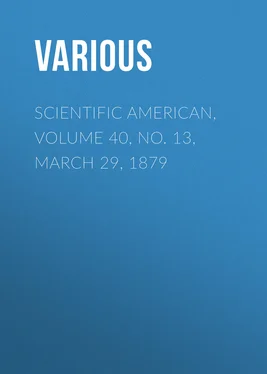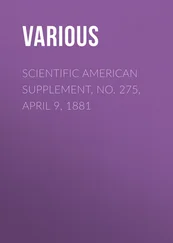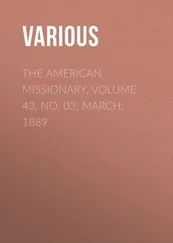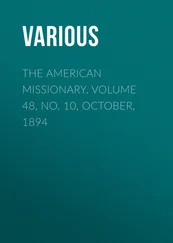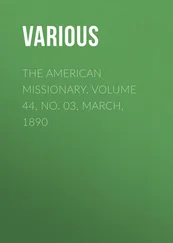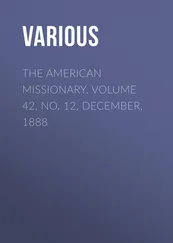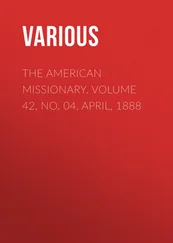Various - Scientific American, Volume 40, No. 13, March 29, 1879
Здесь есть возможность читать онлайн «Various - Scientific American, Volume 40, No. 13, March 29, 1879» — ознакомительный отрывок электронной книги совершенно бесплатно, а после прочтения отрывка купить полную версию. В некоторых случаях можно слушать аудио, скачать через торрент в формате fb2 и присутствует краткое содержание. Жанр: foreign_antique, periodic, foreign_edu, на английском языке. Описание произведения, (предисловие) а так же отзывы посетителей доступны на портале библиотеки ЛибКат.
- Название:Scientific American, Volume 40, No. 13, March 29, 1879
- Автор:
- Жанр:
- Год:неизвестен
- ISBN:нет данных
- Рейтинг книги:5 / 5. Голосов: 1
-
Избранное:Добавить в избранное
- Отзывы:
-
Ваша оценка:
- 100
- 1
- 2
- 3
- 4
- 5
Scientific American, Volume 40, No. 13, March 29, 1879: краткое содержание, описание и аннотация
Предлагаем к чтению аннотацию, описание, краткое содержание или предисловие (зависит от того, что написал сам автор книги «Scientific American, Volume 40, No. 13, March 29, 1879»). Если вы не нашли необходимую информацию о книге — напишите в комментариях, мы постараемся отыскать её.
Scientific American, Volume 40, No. 13, March 29, 1879 — читать онлайн ознакомительный отрывок
Ниже представлен текст книги, разбитый по страницам. Система сохранения места последней прочитанной страницы, позволяет с удобством читать онлайн бесплатно книгу «Scientific American, Volume 40, No. 13, March 29, 1879», без необходимости каждый раз заново искать на чём Вы остановились. Поставьте закладку, и сможете в любой момент перейти на страницу, на которой закончили чтение.
Интервал:
Закладка:
The double gyratory motion of the crusher, C, causes it to approach all portions of the lining, L, crushing whatever lies between.
It is said that this machine is capable of crushing 10 tons of the hardest ore per hour. Its weight is 6,500 lbs.— Musée de l'Industrie.
RECENT AMERICAN PATENTS
Enos Richmond, of Troy, N. Y., has invented a steak tenderer, having a plunger studded with chisel-pointed rods, and arranged in a case in connection with an elevating spring. A blow upon the knob at the top of the plunger forces the chisel-pointed rods through holes in the casing into the meat, the casing resting on the surface of the steak.
Messrs. A. W. Southard and Volney R. Sears, of Falls City, Neb., have patented an improved invalid bedstead, which is provided with ingenious mechanism for placing the invalid in different positions.
An improved spring attachment for carriage tops, which is designed to prevent the rear bow from being bent by the weight of the top when turned back, has been patented by Mr. Robert E. McCormick, of Doylestown, O.
Mr. Espy Gallipher, of Schellsburg, Pa., has devised an axle journal having a groove lengthwise upon its upper side which extends back upon the surface of the axle and communicates with an oil cup. A sliding rod occupies a portion of the groove; when this rod is drawn out it permits the oil to fill the groove; when it is pushed into the groove in the axle, the oil is ejected and a further supply is cut off.
An improved pill machine, invented by Messrs. W. N. Fort and R. R. Moore, of Lewisville, Ark., is adapted to the manufacture of pills in large quantities. The machine has mechanism for grinding and mixing ingredients, a grooved wheel and trough for forming the pills, and a device for applying powder.
An improvement in millstone adjustments has been patented by Mr. Stephen P. Walling, of South Edmeston, N. Y. This invention consists in a screw applied to the end of the mill spindle on which the stone is rigidly held, so that the running stone may be forced by the screw away from the stationary stone and held against the action of a spring at the opposite end of the spindle, the object being to prevent the stones from becoming dulled by contact with each other.
An improved attachment for sewing machines for soaking or waxing the thread as it passes the needle, has been patented by Mr. Pedro F. Fernandez, of San Juan, Porto Rico. The invention consists in a frame secured to the arm of a sewing machine by a thumb-screw, and provided with a clamping device for holding wax or soap.
A novel combination of a toggle and springs and levers for operating a drag saw has been patented by Mr. Harvey Hughes, of Wheat Ridge, Ohio. The saw, while properly guided, is free to move up or down without affecting the leverage.
An improvement in filters, which consists in re-enforcing the felt disk with a backing of wire cloth to enable it to resist heavy water pressure, has been patented by Mr. B. P. Chatfield, of Aiken, S. C.
A basket having light sheet metal sides attached to a wooden bottom by crimping the edges over a rib on the periphery of the bottom, has been patented by Mr. Samuel Friend, of Decatur, Ill. The handle and lid may be easily removed to permit of packing and storage.
An improved cross bar for fastening doors, patented by Mr. Richard Condon, of La Salle, Ill., has a spring acted portion which engages a socket on the door casing, and is retained in that position by a spring catch.
A NEW IRONING TABLE
The accompanying engraving represents a convenient and inexpensive table recently patented by Mr. Albert H. Hogins, of Morrisania, N. Y. It is more especially designed for ironing, but it may be used for other purposes when closed up. The top is made in two tapering sections, A B. The section, B, is narrower than the other, and is pivoted at its wider end to a bar, E, which slides into a socket formed in the table. The table has five legs, one of which, D, is attached to a sliding rail that supports the narrower end of the movable part of the top. The table is provided with a drawer in one end and with a tray, C, for containing blankets, etc.
HOGINS' IMPROVED TABLE.
The convenience and practicability of this table for general laundry use, will be apparent without further explanation. The board, B, when drawn out will be used for ironing skirts, shirts, and other garments requiring a board of this character, and when the table is closed together and fastened by the hooks, it may be used in ironing larger articles. When closed it presents the appearance of an ordinary table and may be used as such.
Further information may be obtained by addressing the inventor as above.
A NOVEL ENGINE REGULATOR
The accompanying engraving represents two different styles of regulator, invented by Mr. Stenberg, in which the effect of centrifugal force is utilized. In a vessel, A, of parabolic shape is placed a disk, C, which floats on glycerine contained by the vessel, and is attached to the walls of the vessel by an annular membrane, so that it may rise and fall in a vertical direction as the glycerine is carried with more or less force toward the edge of the vessel by centrifugal action. The inner surface of the vessel, A, is provided with radial grooves, by which the rotary motion of the vessel is communicated to the glycerine. To the center of the disk, C, is attached a vertical rod, which extends downward through the hollow shaft and is connected with governor valve. An increase of speed throws the glycerine toward the periphery of the valve, and, raising the disk, C, closes the steam valve; a diminution of speed permits the glycerine to fall back, when the disk descends and the valve opens.
STENBERG REGULATOR.
The disk, C, has a small aperture for the admission and escape of air, and the apparatus is adjusted by pouring lead into the groove in the disk.
The regulator shown in Fig. 2 operates upon the same principle, but it is adjusted by means of a spring.
This apparatus is manufactured by Blancke Bros., Magdeburg.— Musée de l'Industrie.
A Strange People
Botel Tobago is an island in the South Seas which has lately been visited by a party of United States naval officers. They were surveying a rock east of the South Cape of Formosa, and called at this island. They found a curious race of Malay stock. These aborigines did not know what money was good for. Nor had they ever used tobacco or rum. They gave the officers goats and pigs for tin pots and brass buttons, and hung around the vessel all day in their canoes waiting for a chance to dive for something which might be thrown overboard. They wore clouts only, ate taro and yams, and had axes, spears, and knives made of common iron. Their canoes were made without nails, and were ornamented with geometrical lines. They wore the beards of goats and small shells as ornaments.
Such is the account of these strange people given by Dr. Siegfried, in a letter read at the last meeting of the Philadelphia Academy of Natural Sciences.
REMEDY FOR THE NEW CARPET BEETLE
Noticing a statement made by Mr. J. A. Lintner, to the effect that the Persian insect powder would probably prove unavailing as a remedy against the ravages of the new carpet beetle ( Anthrenus ), W. L. Carpenter, of the U.S.A., was led to institute some experiments with this well known insecticide, the results of which he communicates to the current number of the Naturalist . A small quantity of the powder was introduced, on the point of a penknife, under a tumbler beneath which various insects were consecutively confined. The movements of the insects brought them in contact with the poison, which readily adhered to their body; in endeavoring to remove it from their appendages a few particles would be carried to the mouth and thence to the stomach, with fatal effect. The results were briefly thus: A honey bee became helpless in 15 minutes; a mad wasp in 8 minutes; a small ant in 5 minutes; a large butterfly resisted the effects for over an hour, and apparently recovered, but died the next day; a house-fly became helpless in 10 minutes; a mosquito in 15; and a flea in 3 minutes. In experimenting on beetles, an insect was secured as nearly the size of the carpet beetle as could be found. It was easily affected, and became helpless in 12 minutes.
Читать дальшеИнтервал:
Закладка:
Похожие книги на «Scientific American, Volume 40, No. 13, March 29, 1879»
Представляем Вашему вниманию похожие книги на «Scientific American, Volume 40, No. 13, March 29, 1879» списком для выбора. Мы отобрали схожую по названию и смыслу литературу в надежде предоставить читателям больше вариантов отыскать новые, интересные, ещё непрочитанные произведения.
Обсуждение, отзывы о книге «Scientific American, Volume 40, No. 13, March 29, 1879» и просто собственные мнения читателей. Оставьте ваши комментарии, напишите, что Вы думаете о произведении, его смысле или главных героях. Укажите что конкретно понравилось, а что нет, и почему Вы так считаете.
